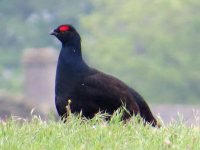Alexjh1
Well-known member
Over the last few weeks I've been pondering doing a long weekend trip a little later in the year to try and clear up a bunch of the remaining species I need in the UK, probably by bike and rail to take advantage of me having my railcard back for one last year.
The eventual headliner would be heading to Coquet to see the Roseate Terns which from what I understand is basically the only reliable place to see them now?
But while I'm doing that, I was looking at to what degree it might be plausible to go to reliable (and obviously in the case of the raptors, public) sites for any of the following:
Black Grouse
Honey Buzzard
Goshawk
Wood Warbler
Twite
Any thoughts/suggestions on how doable that would be, and what the best sort of time frame to look into it would be? Any thoughts would be greatly appreciated!
The eventual headliner would be heading to Coquet to see the Roseate Terns which from what I understand is basically the only reliable place to see them now?
But while I'm doing that, I was looking at to what degree it might be plausible to go to reliable (and obviously in the case of the raptors, public) sites for any of the following:
Black Grouse
Honey Buzzard
Goshawk
Wood Warbler
Twite
Any thoughts/suggestions on how doable that would be, and what the best sort of time frame to look into it would be? Any thoughts would be greatly appreciated!






